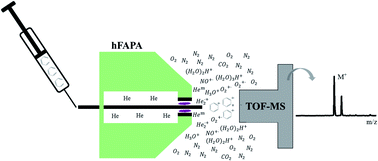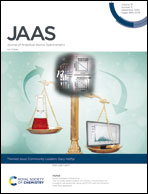Evaluation of a modified halo flowing atmospheric pressure afterglow ion source for the analysis of directly injected volatile organic compounds
Abstract
A modified halo-shaped Flowing Atmospheric Pressure Afterglow (h-FAPA) source is coupled to an Atmospheric Pressure Interface Time of Flight Mass Spectrometer (API-TOFMS) for the analysis of gas samples. The h-FAPA is an ionization source easy to manufacture, operate and handle, and with low consumption in terms of gas flow rates and electric power. The analytical performance of this plasma-based ambient ionization source is evaluated for the direct analysis of VOCs, using benzene as a model compound. The influence of the different operating parameters, such as sampling distance, discharge current, and gas flow rates, is evaluated to optimize the detection of the benzene molecular ion. Matrix effects are evaluated using mixtures of different VOCs, and spiked synthetic air and human breath. Quantitative recoveries of benzene concentrations are around 100% in different VOC mixtures, showing low matrix effects. Moreover, calibration curves with similar sensitivities for benzene are obtained using spiked synthetic air and human breath. Limits of detection are in the order of 1 ng L−1 in both cases.

- This article is part of the themed collection: Community Leaders: Gary Hieftje


 Please wait while we load your content...
Please wait while we load your content...